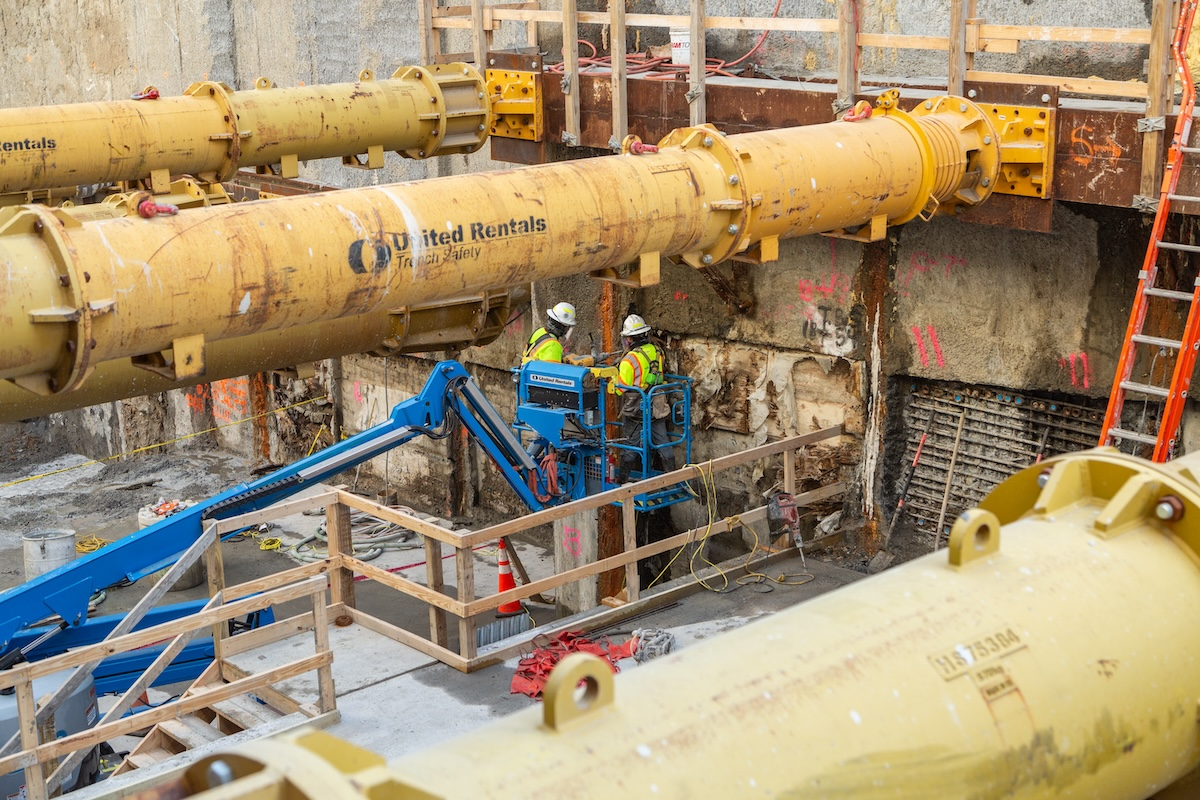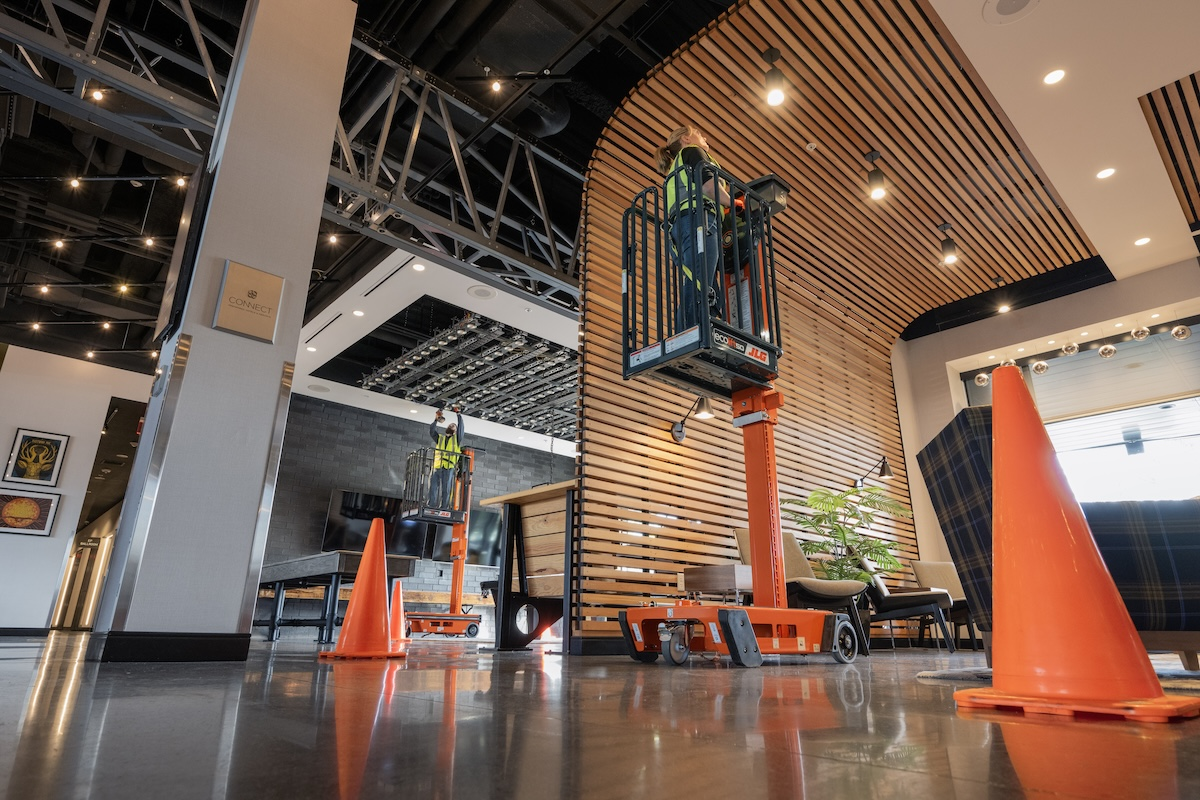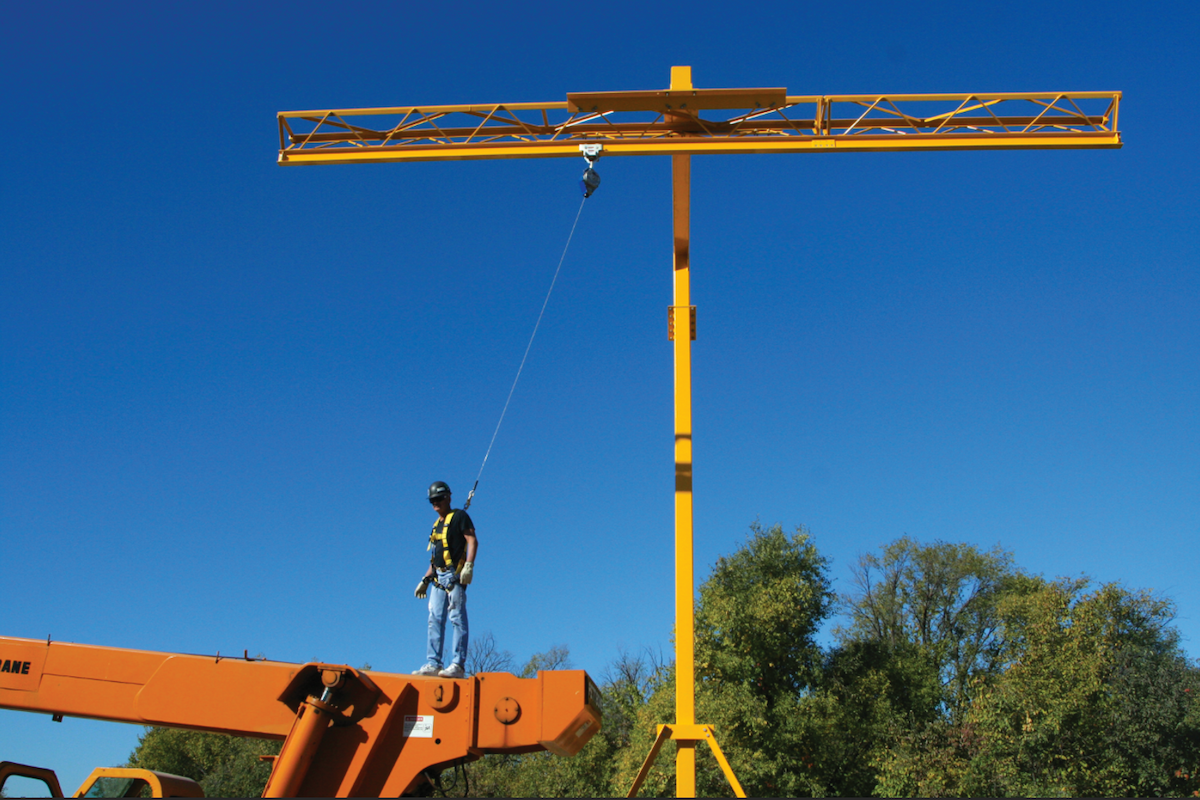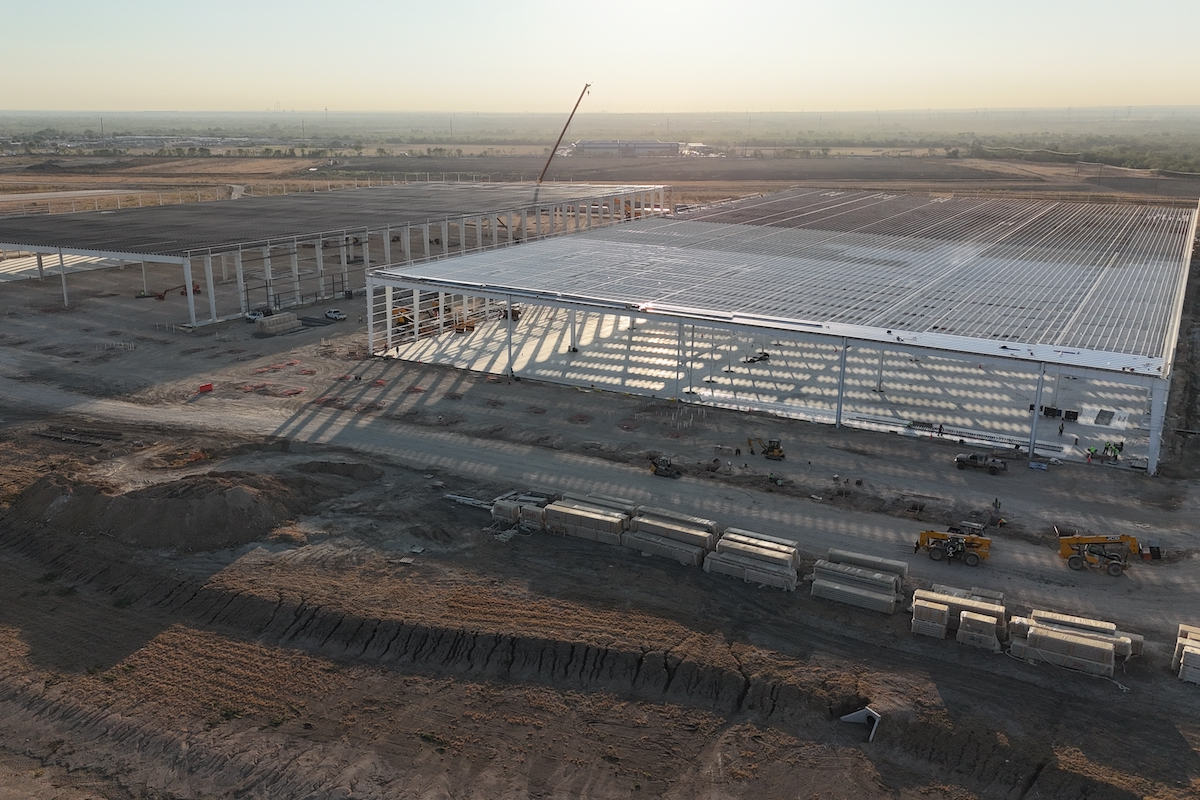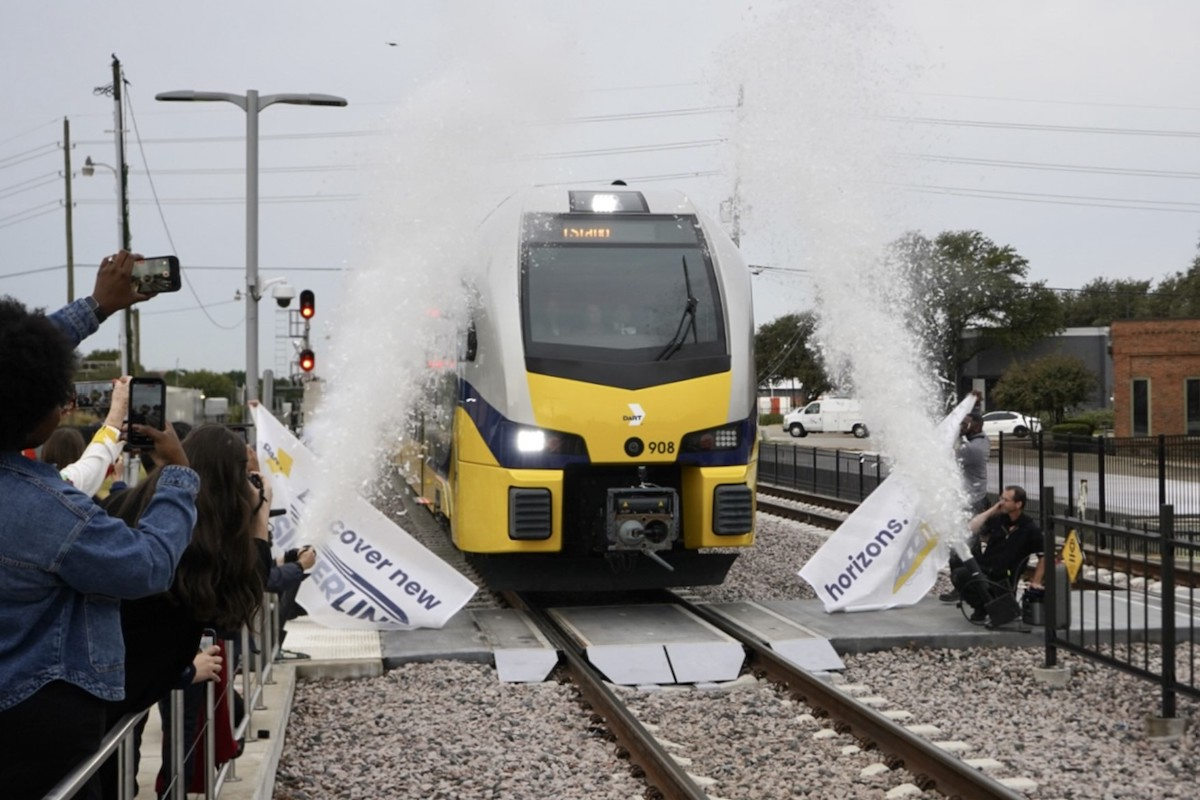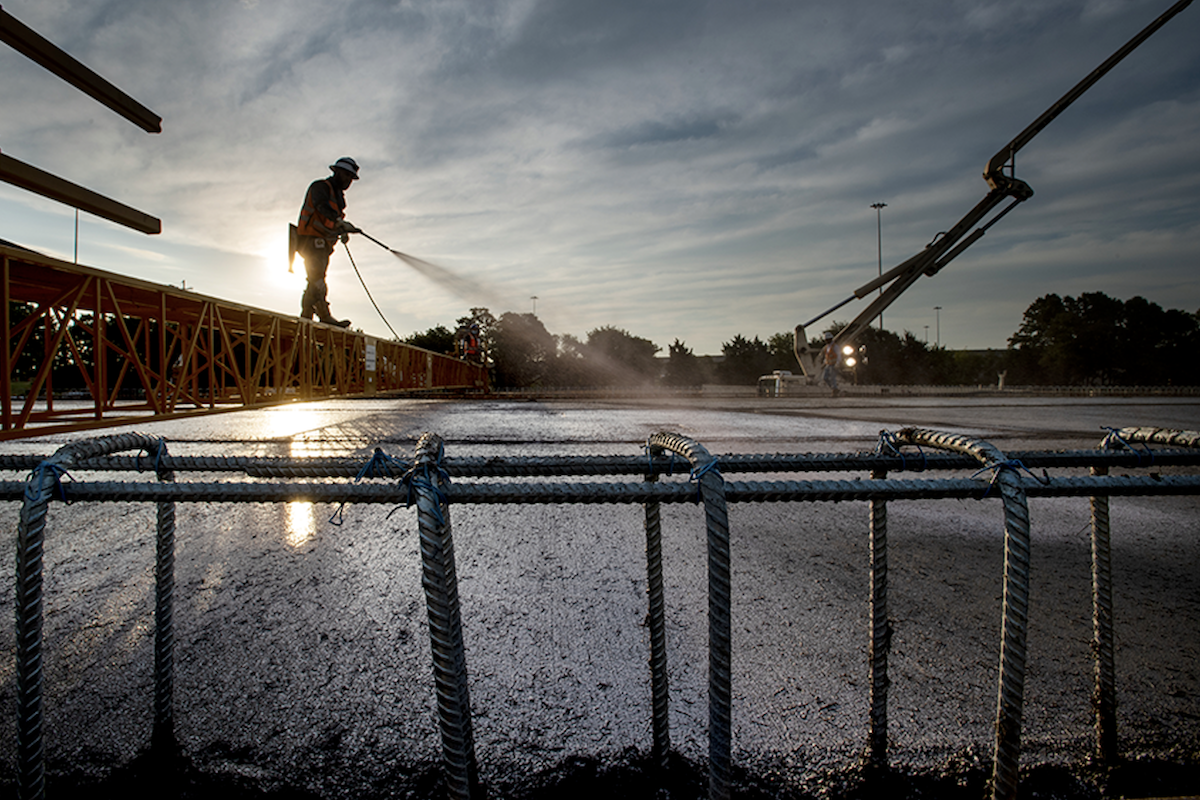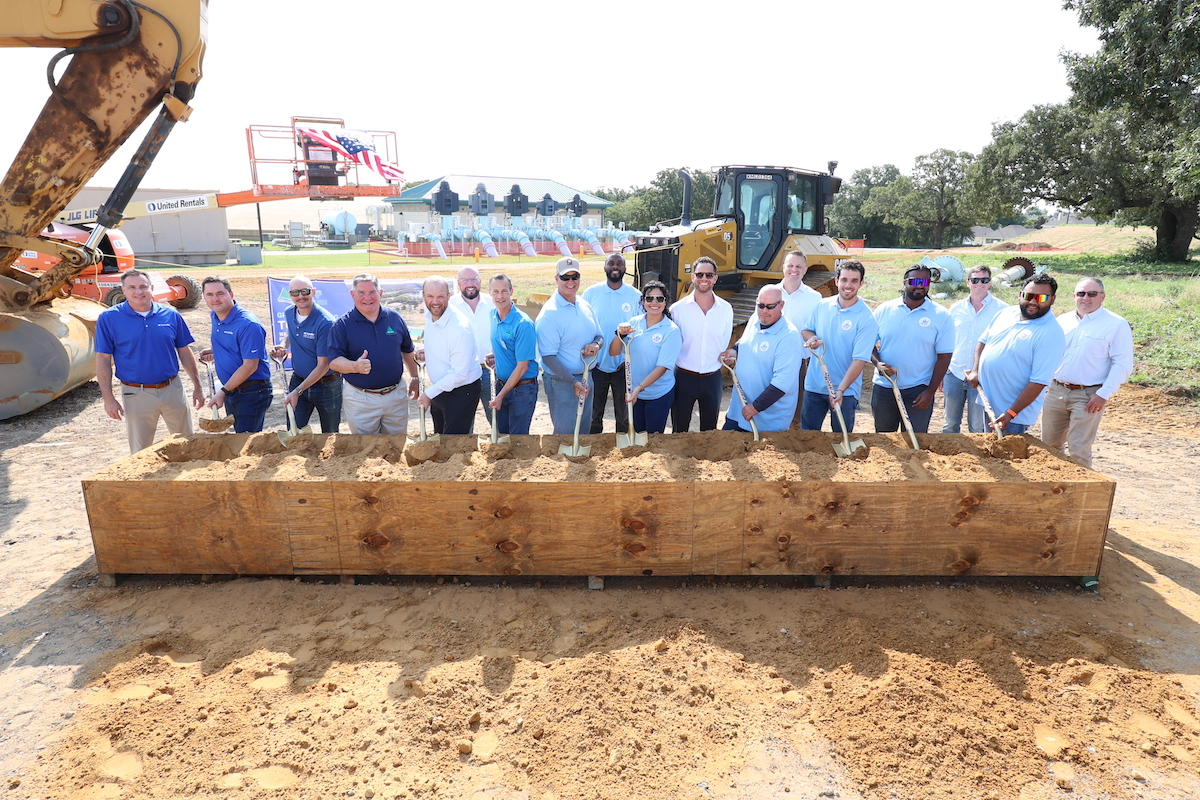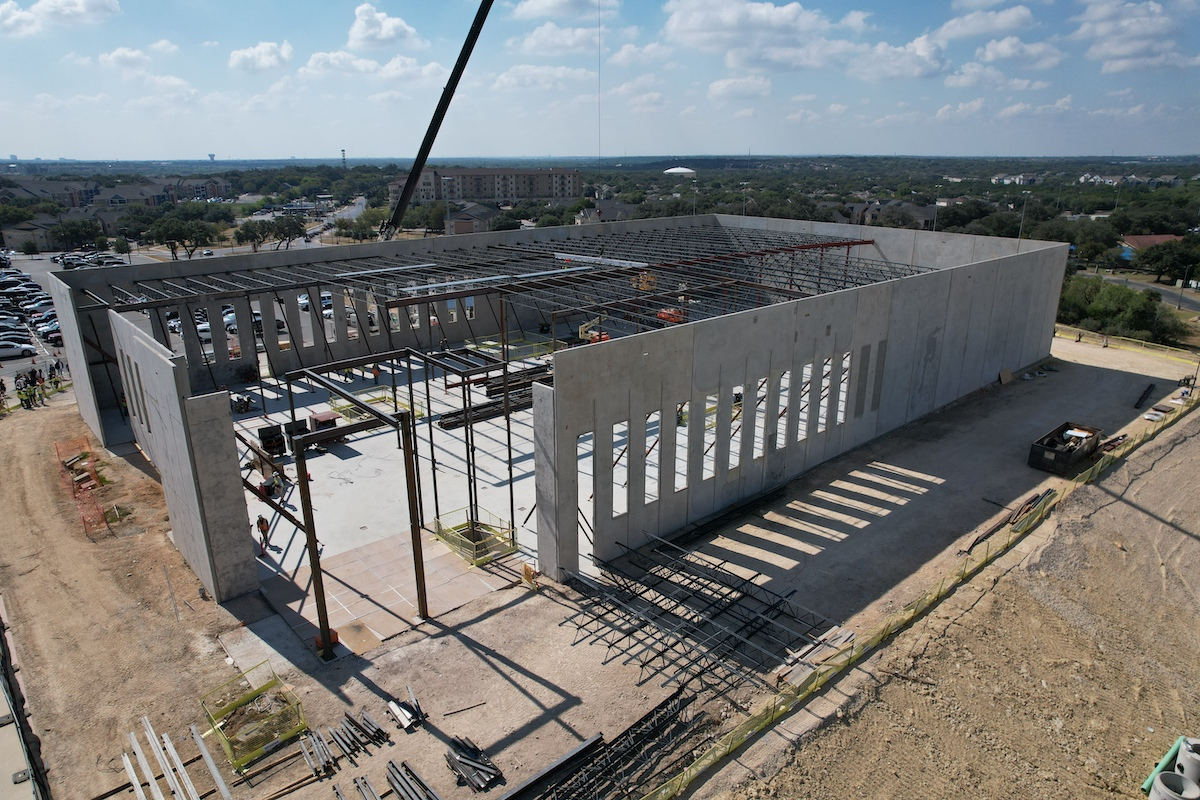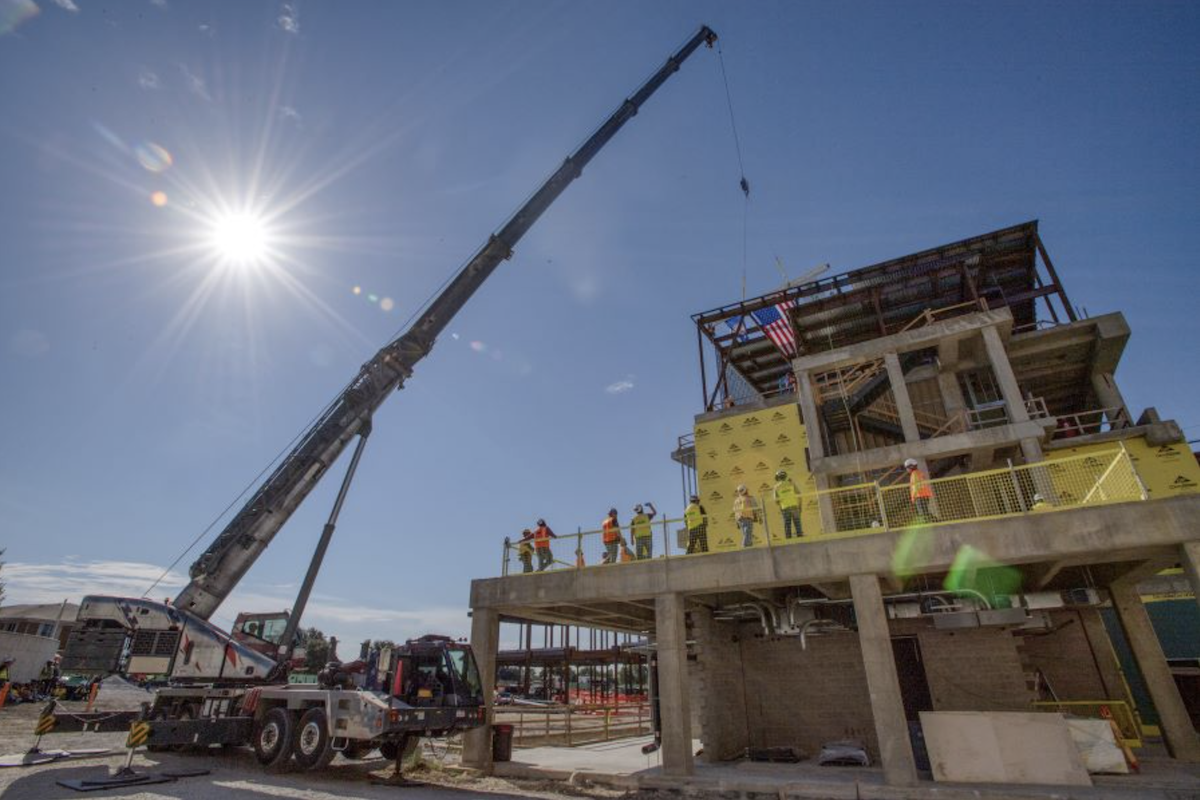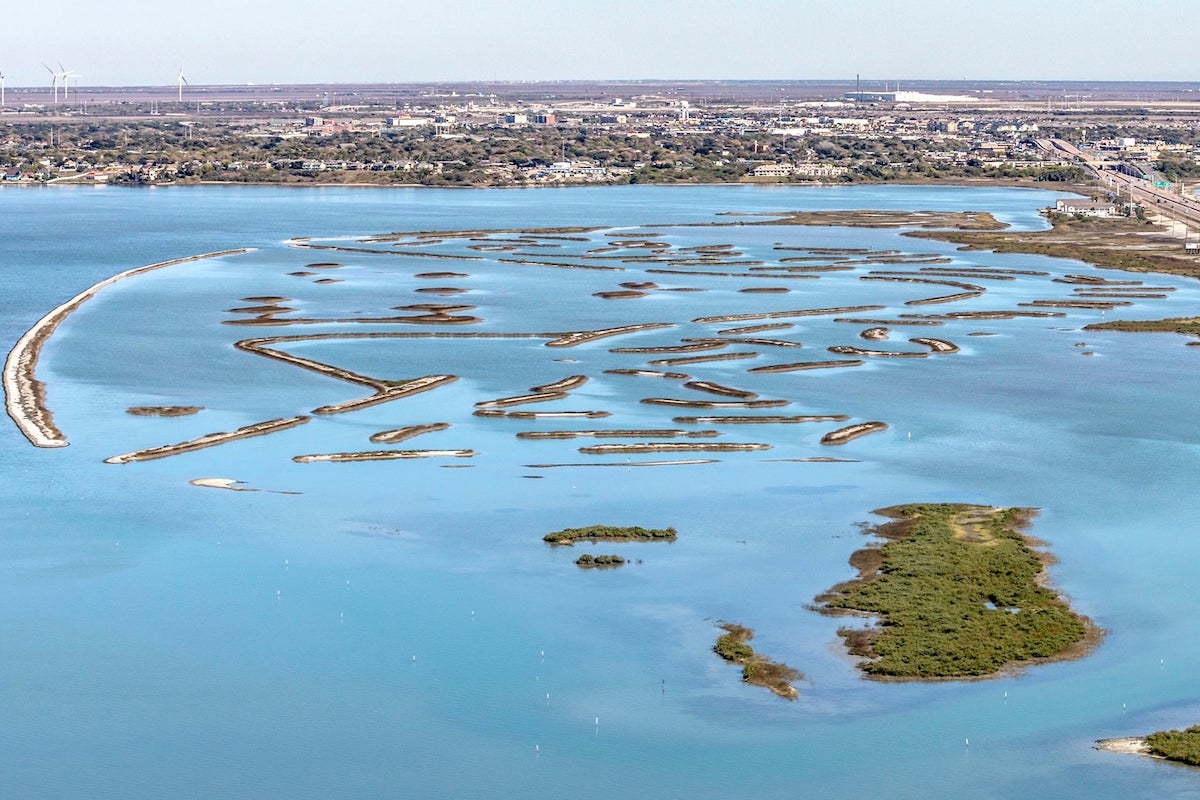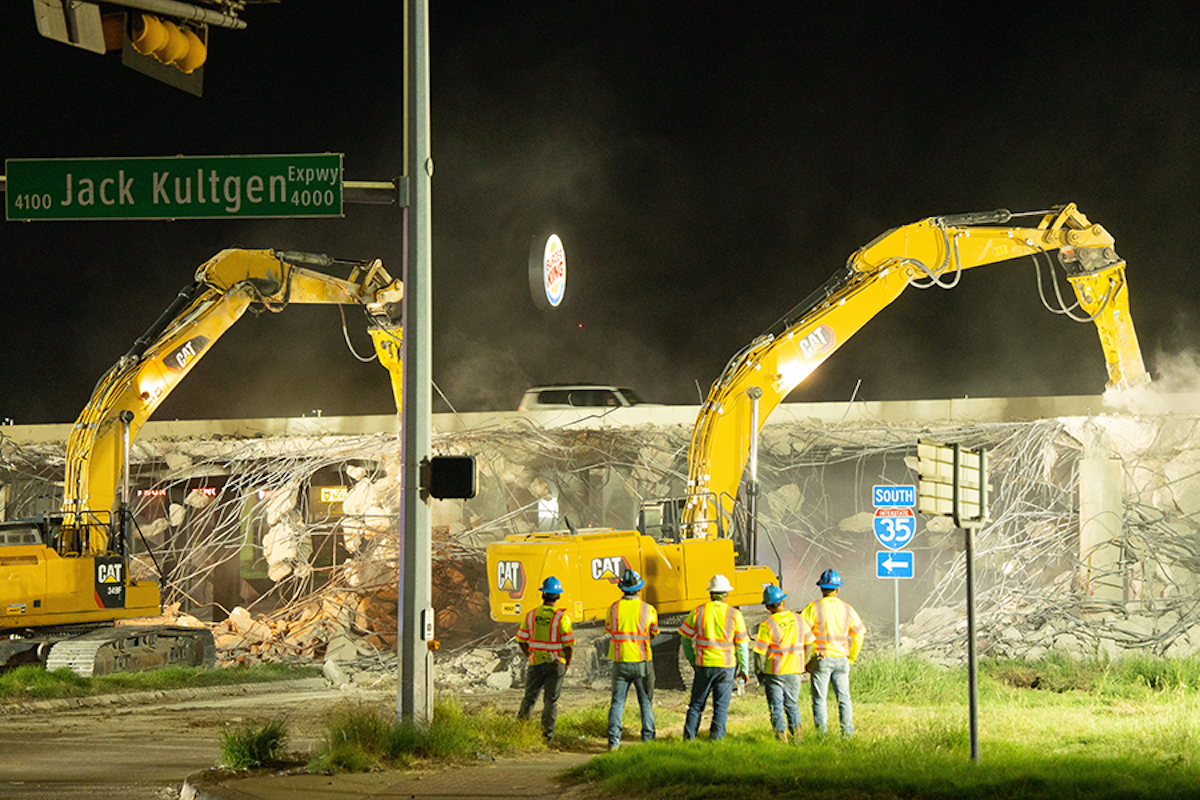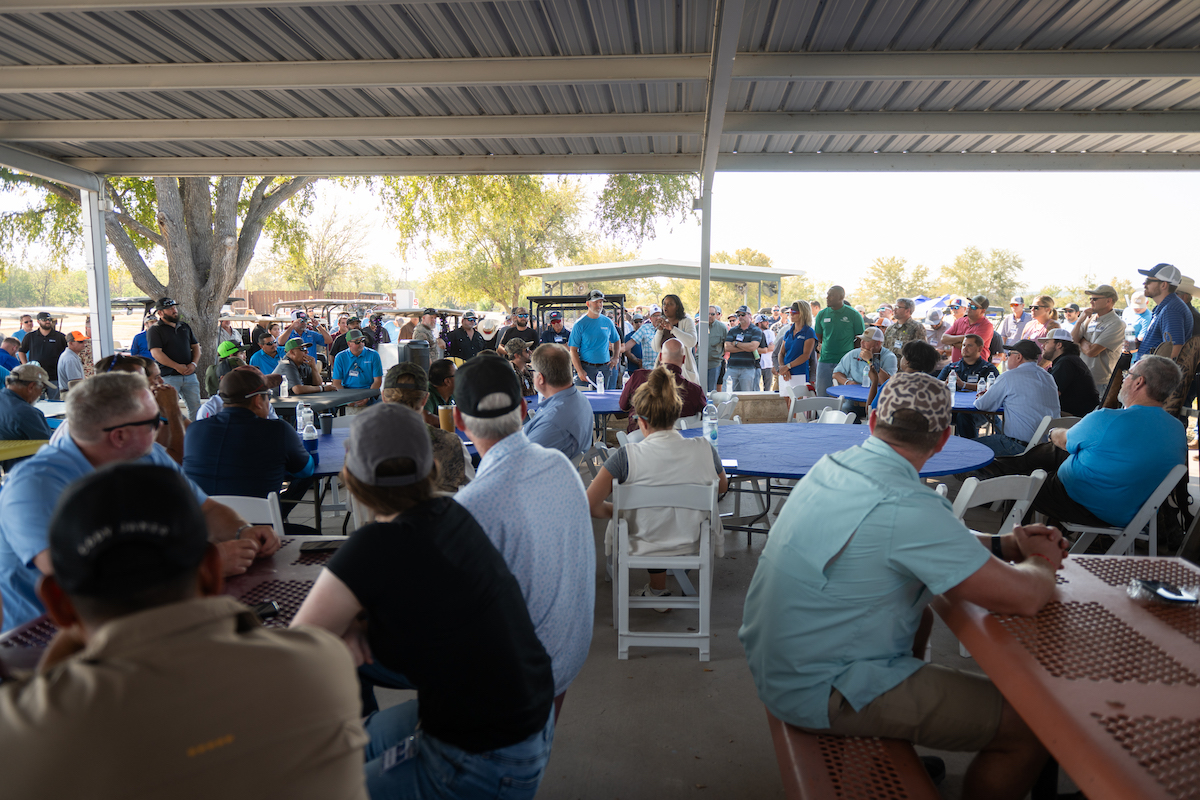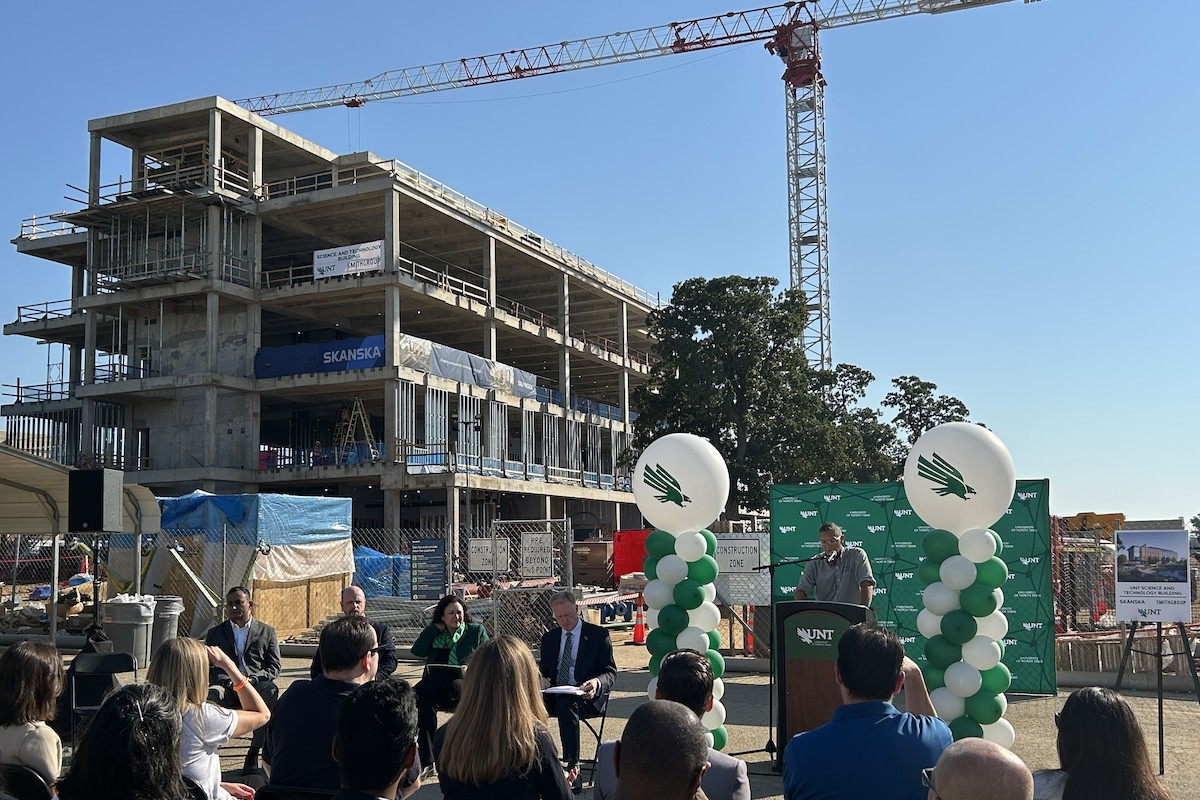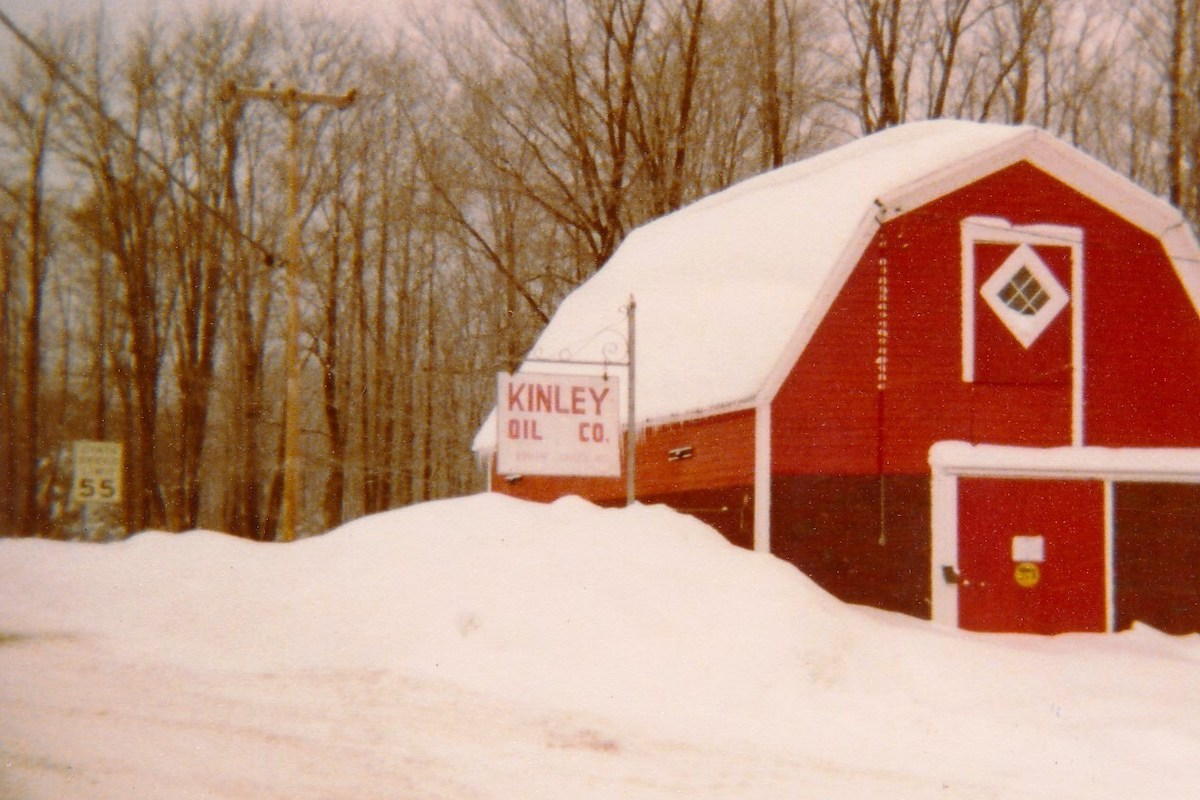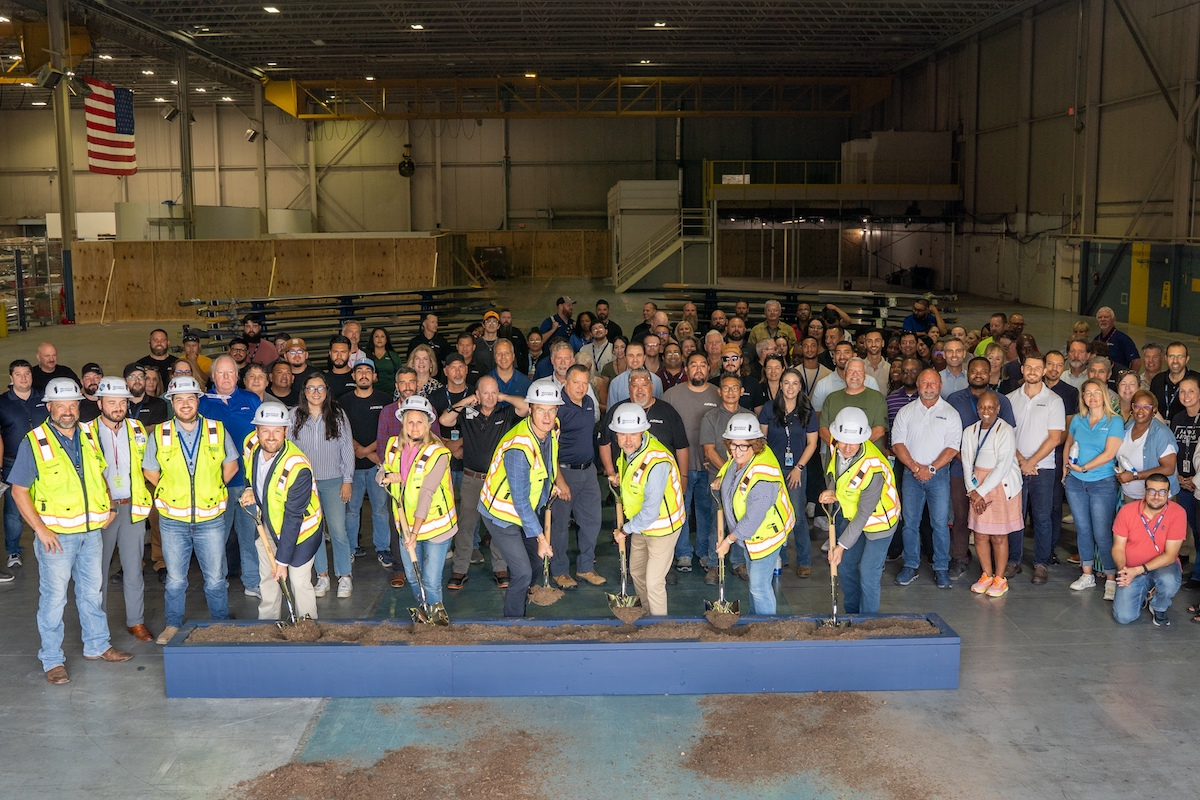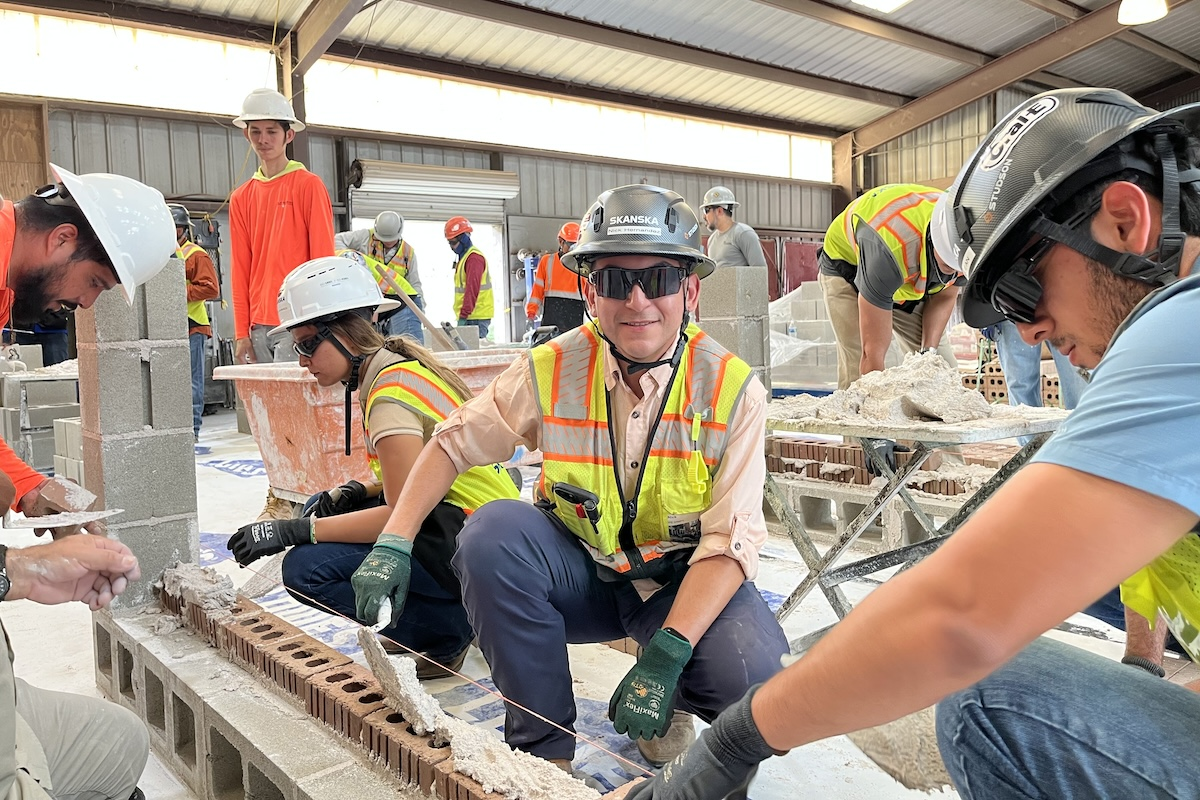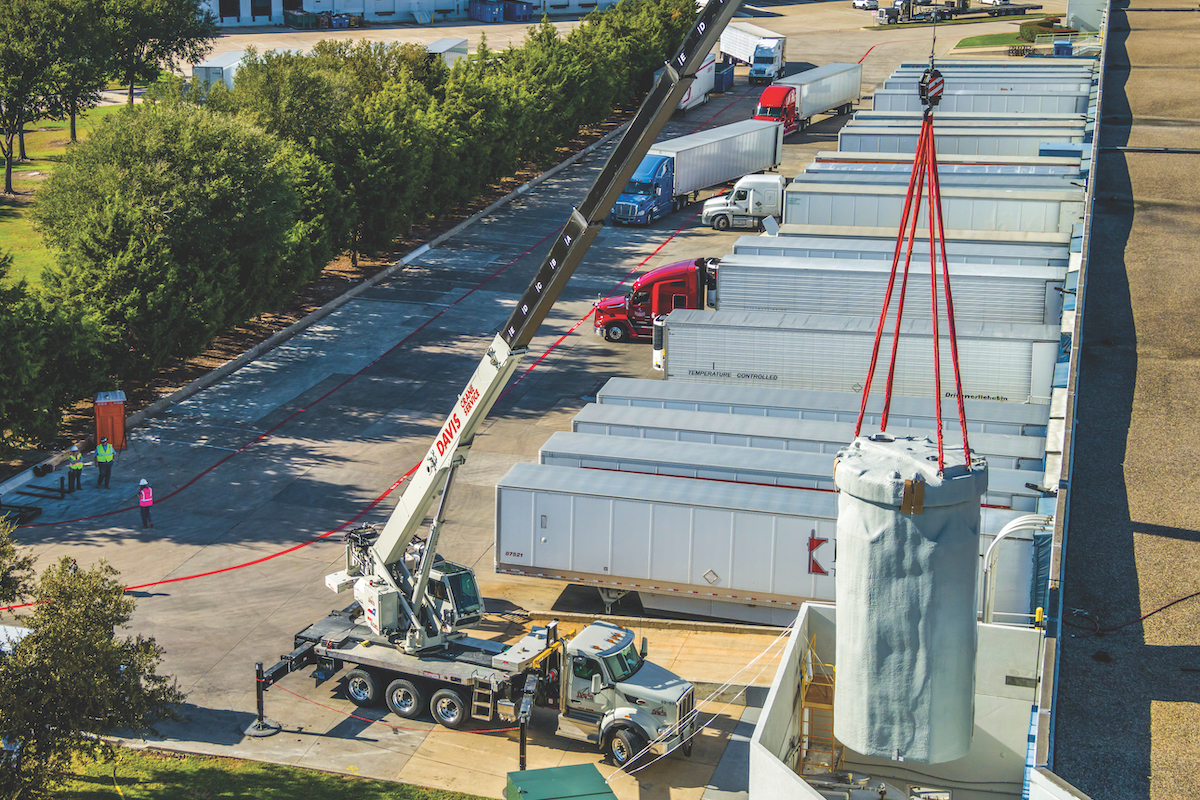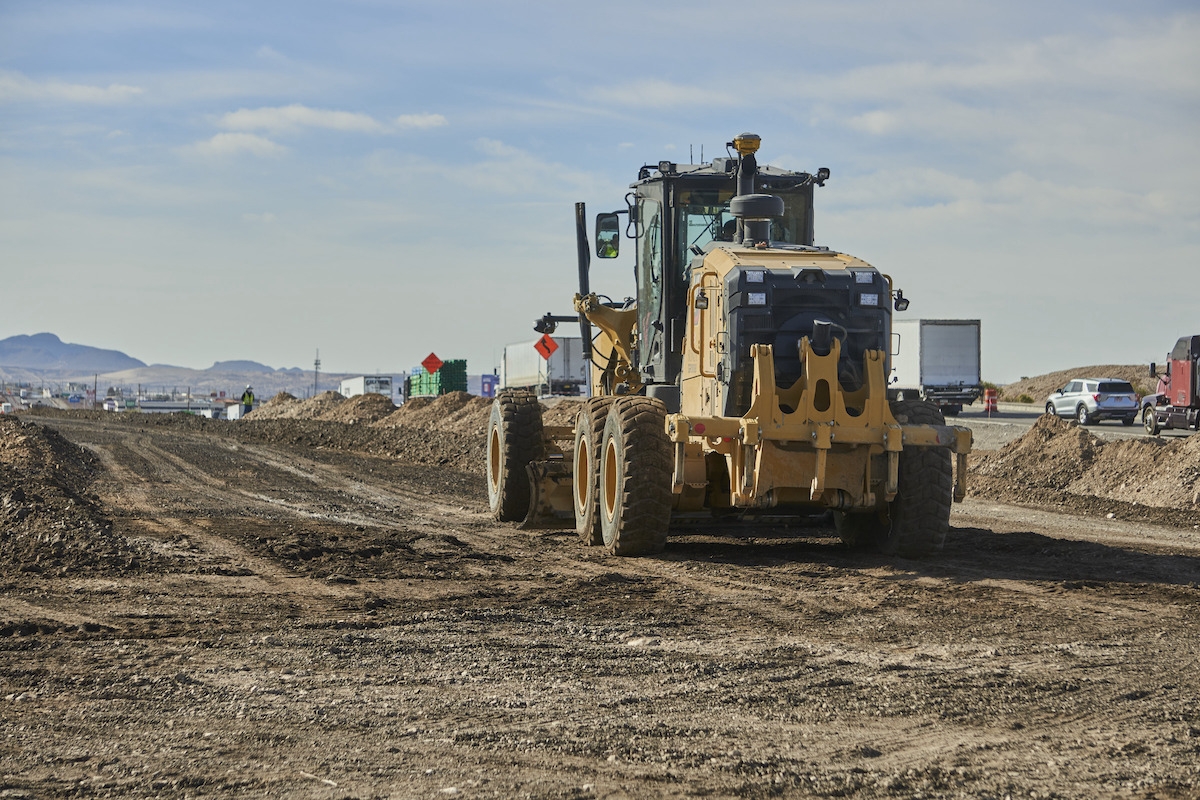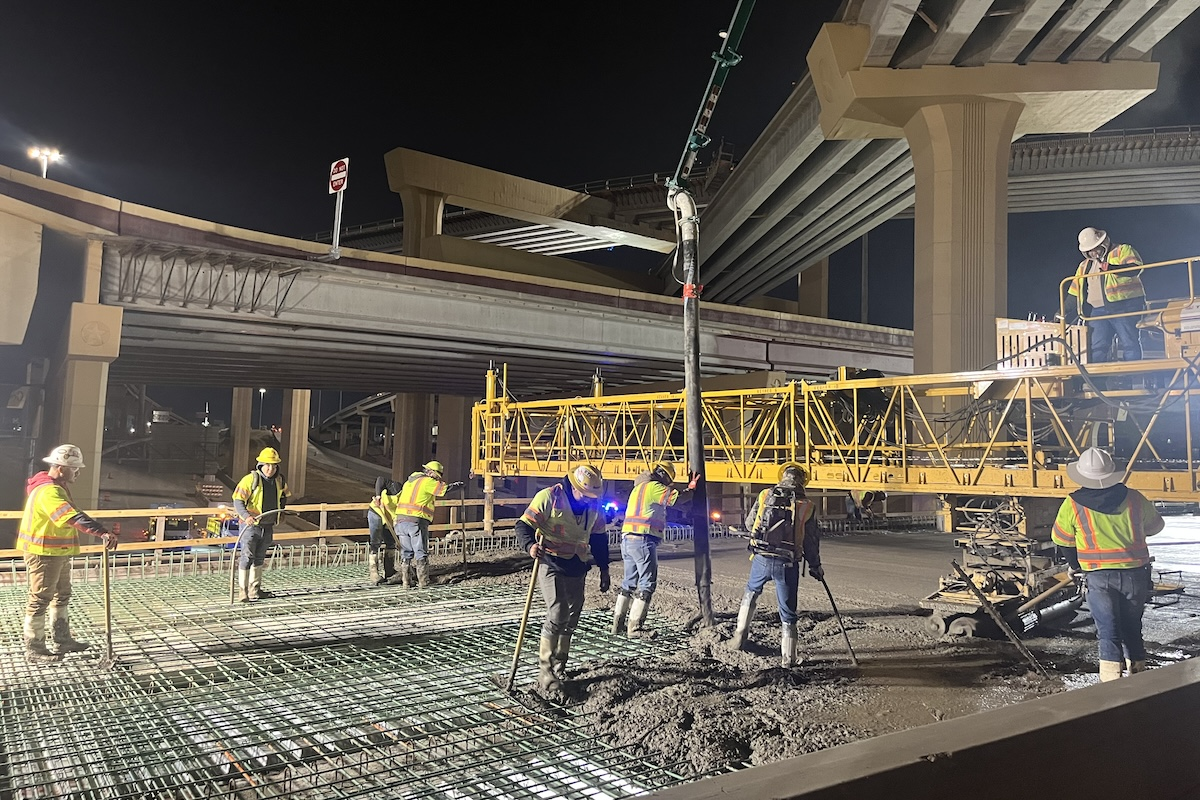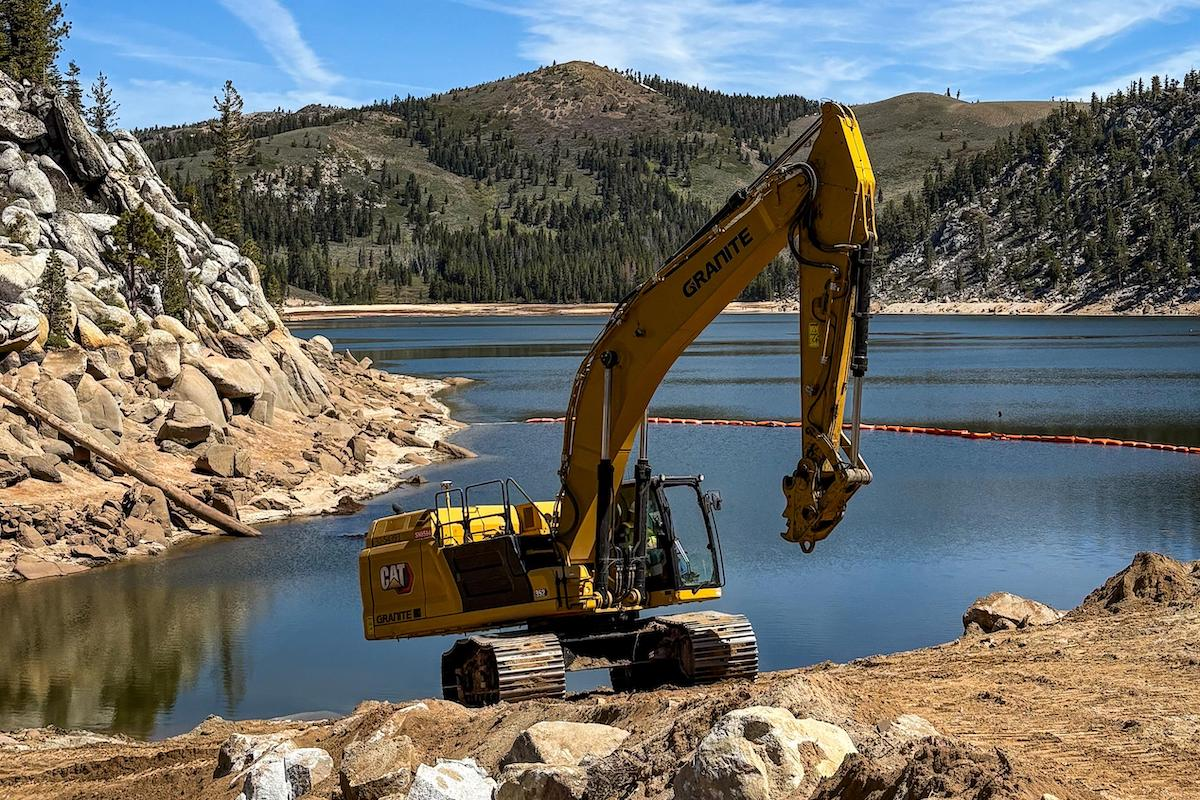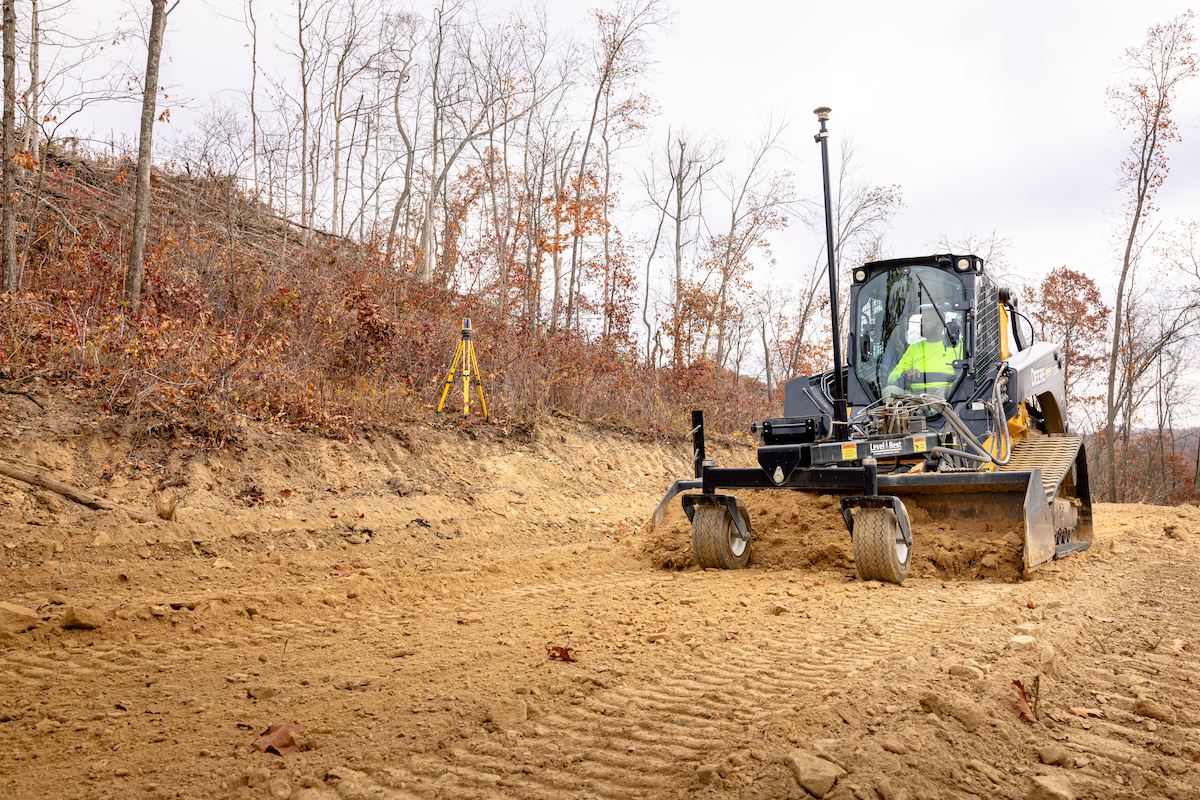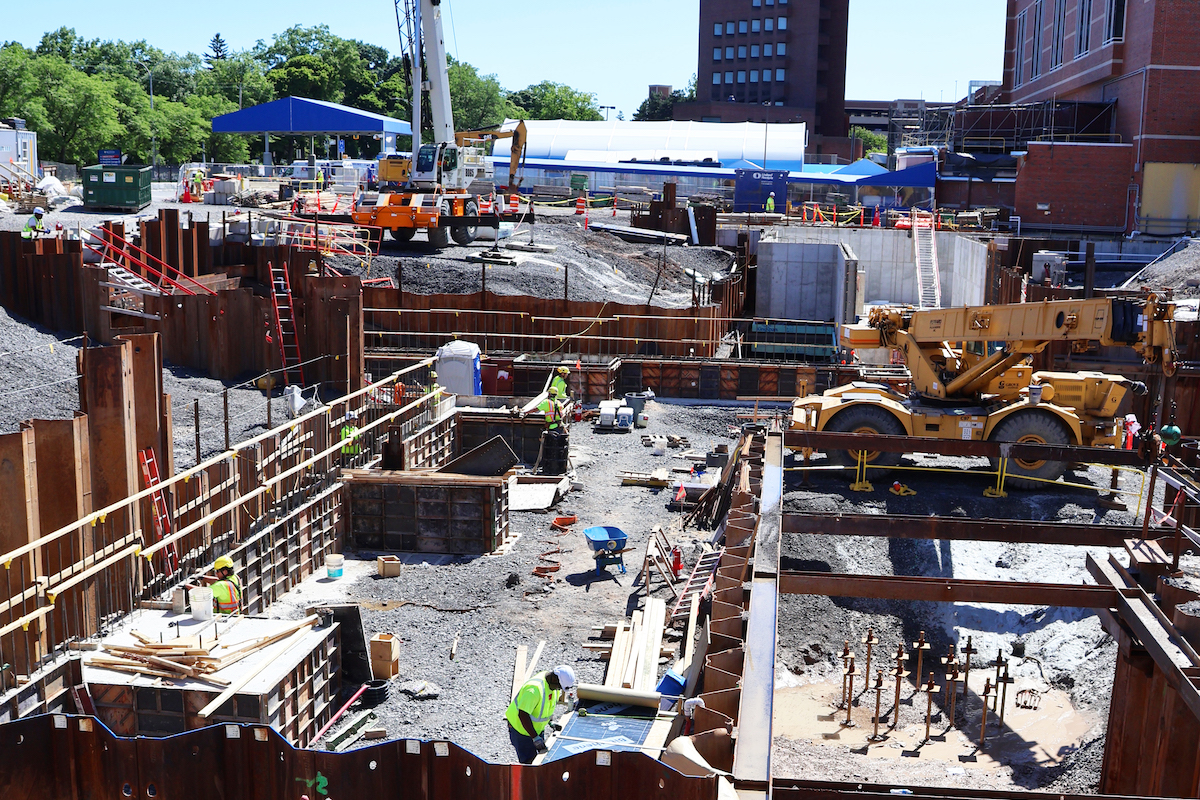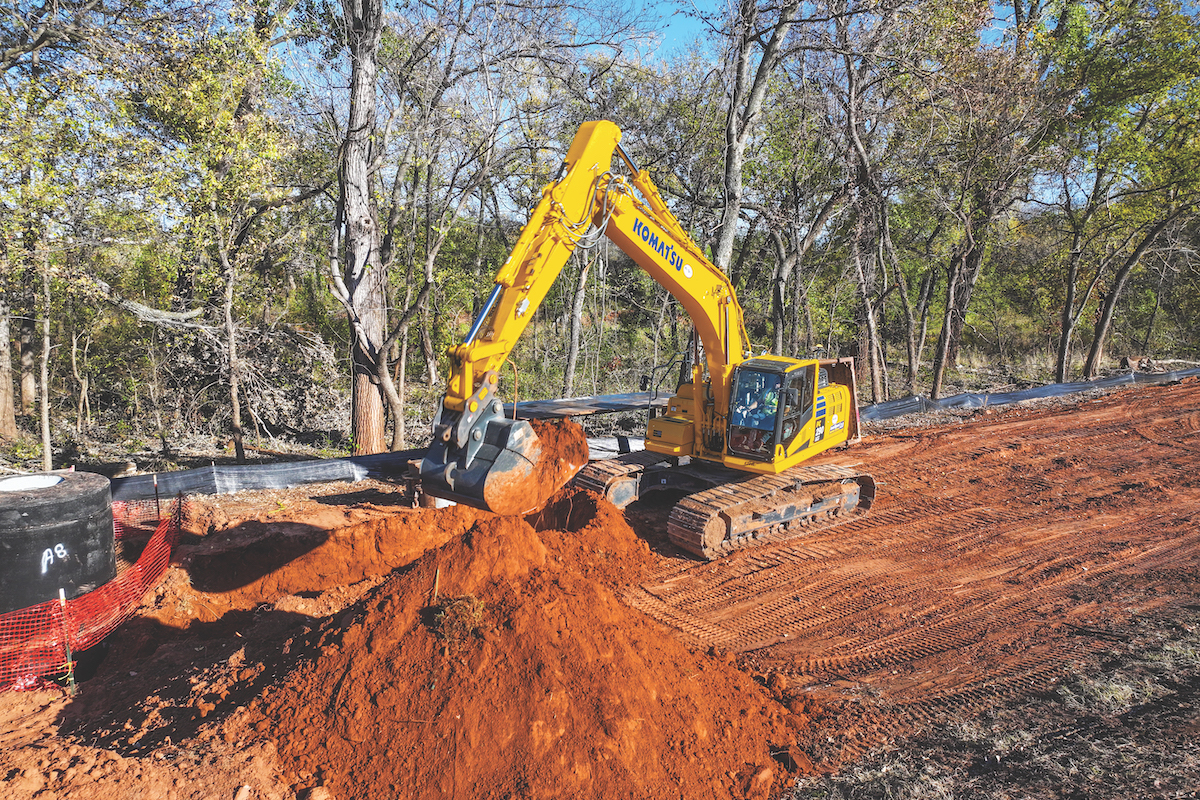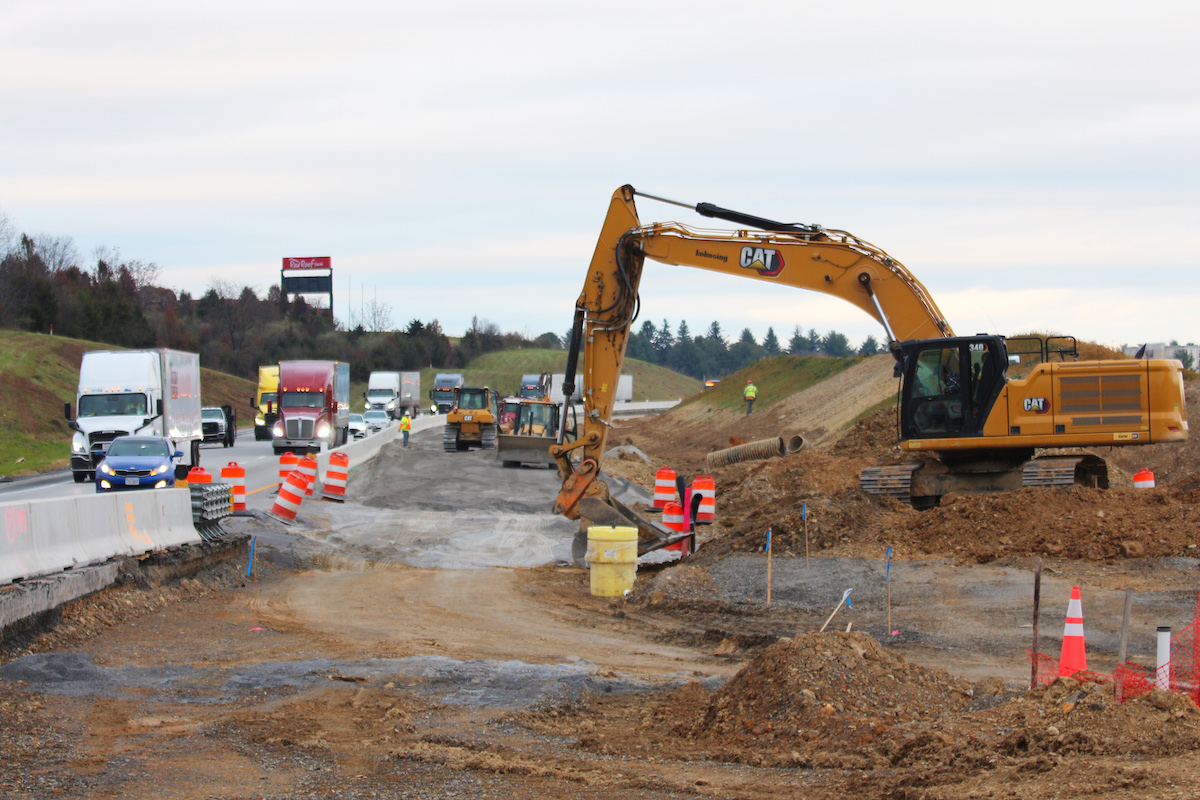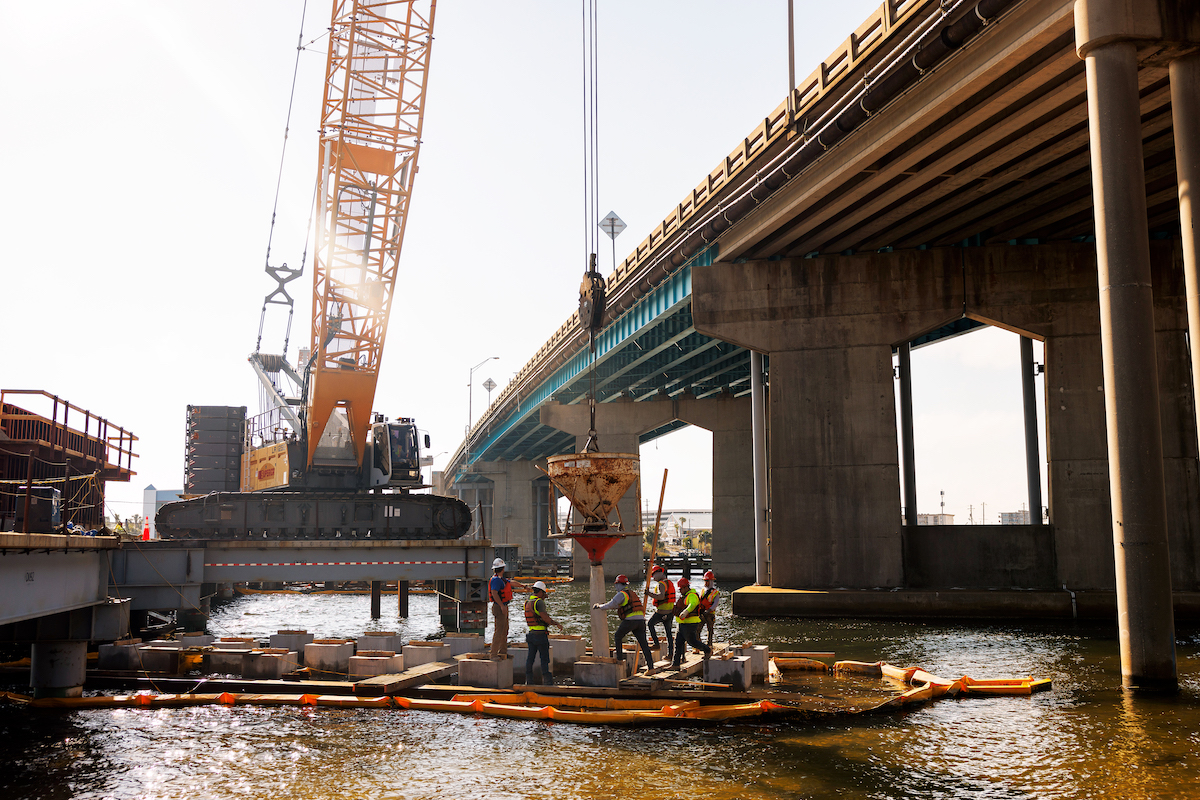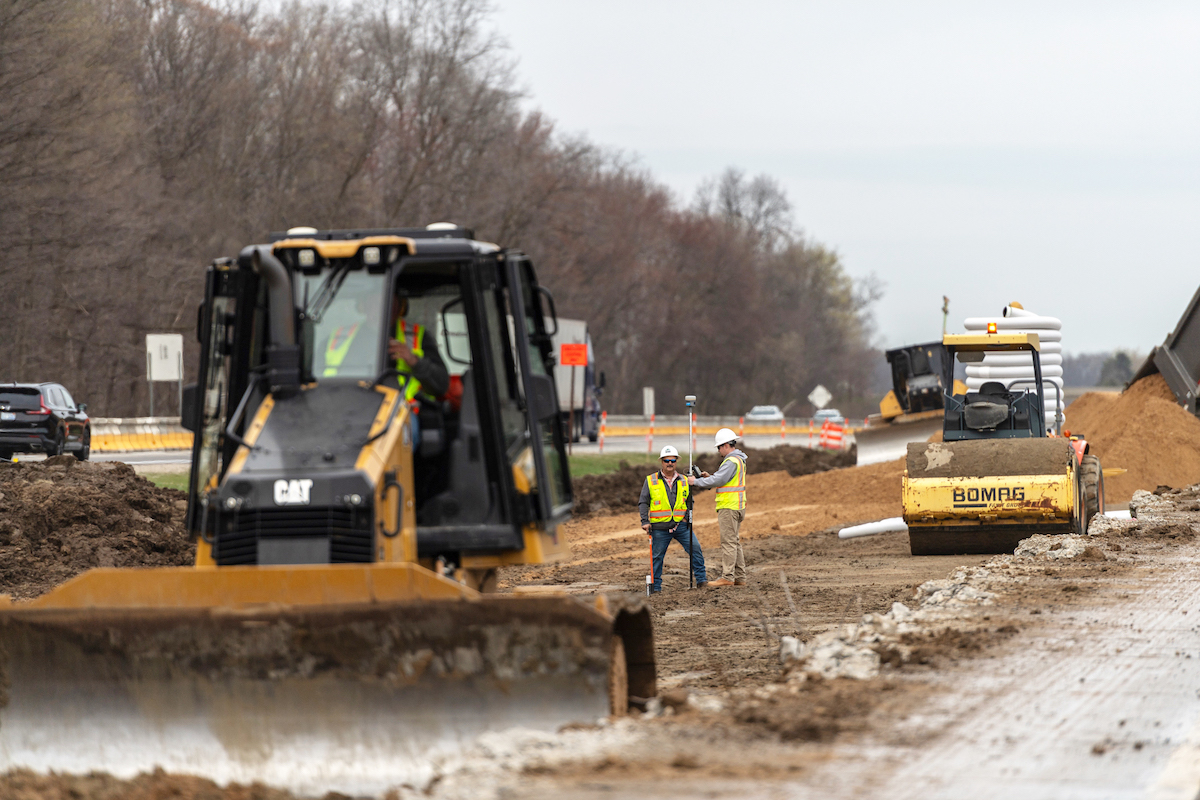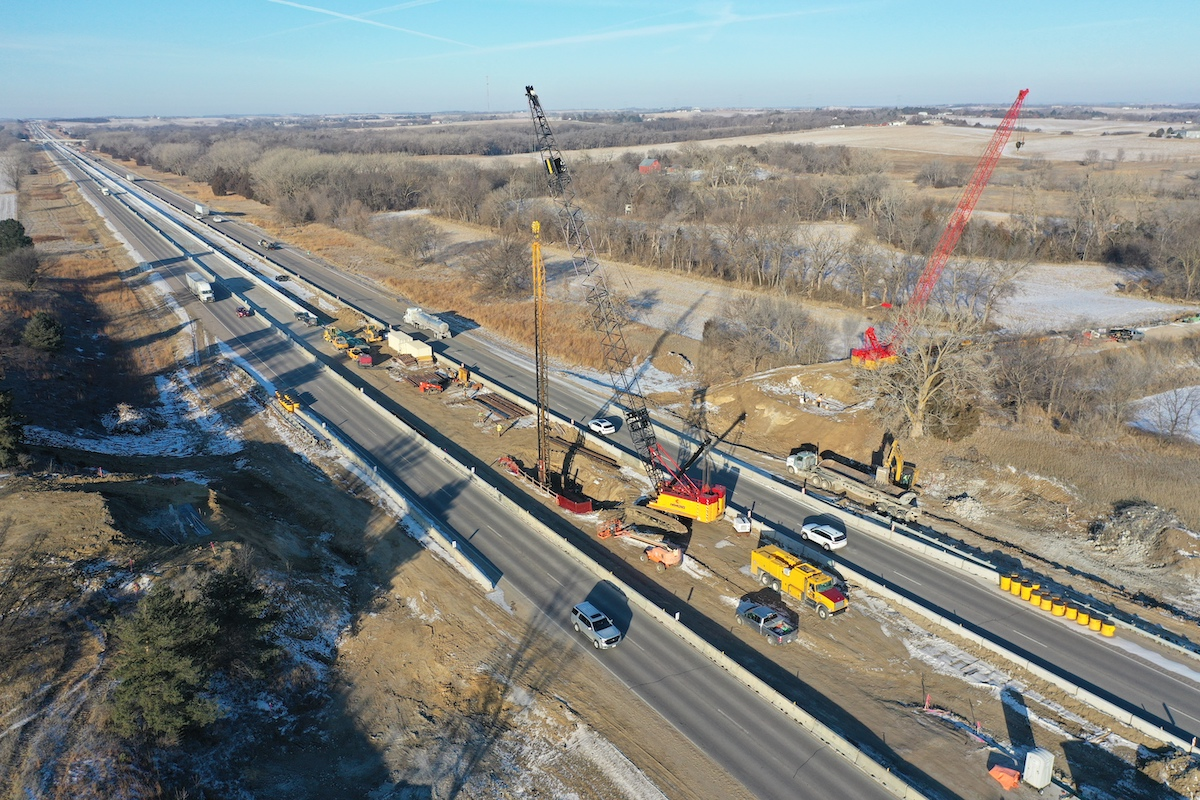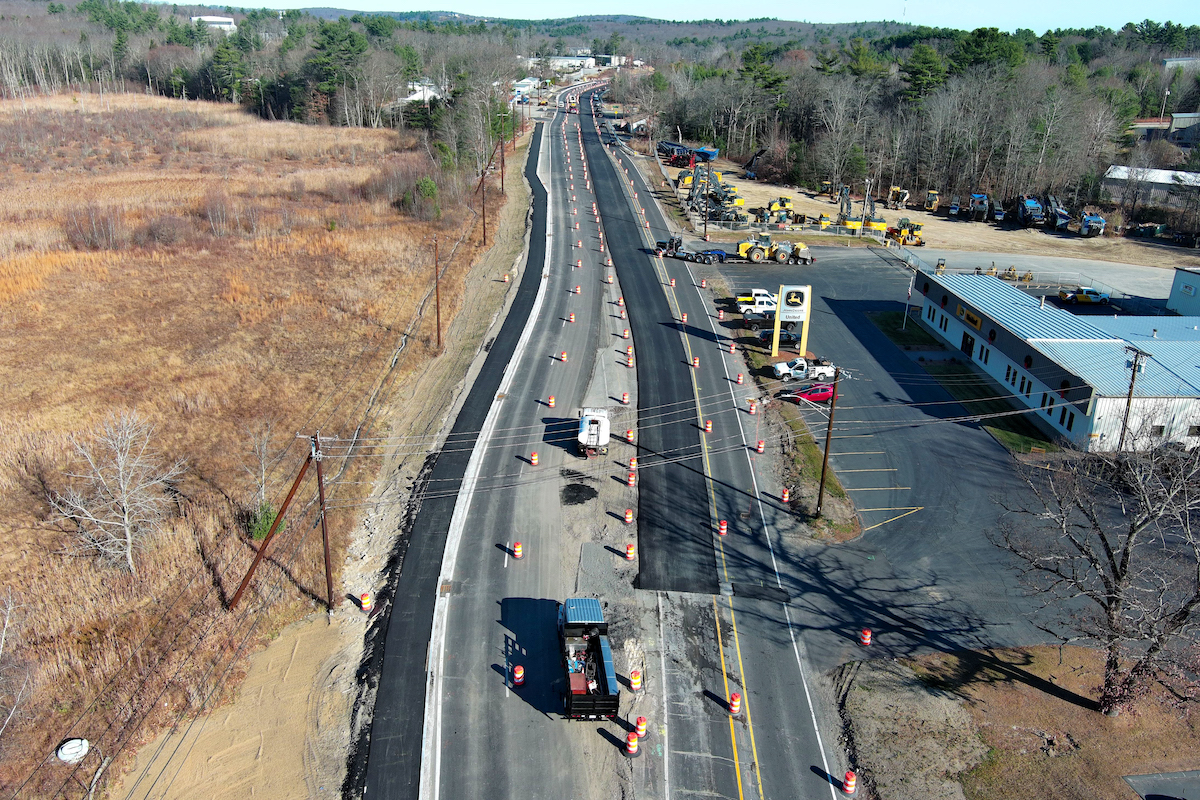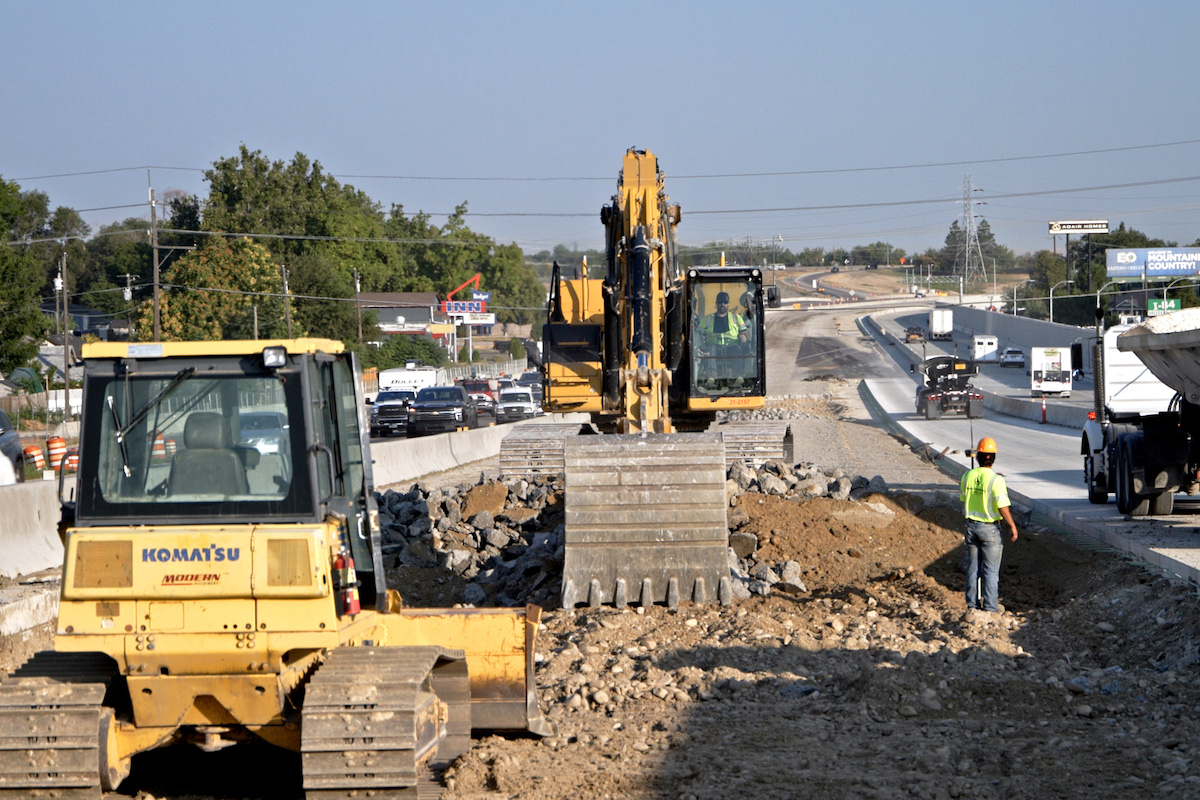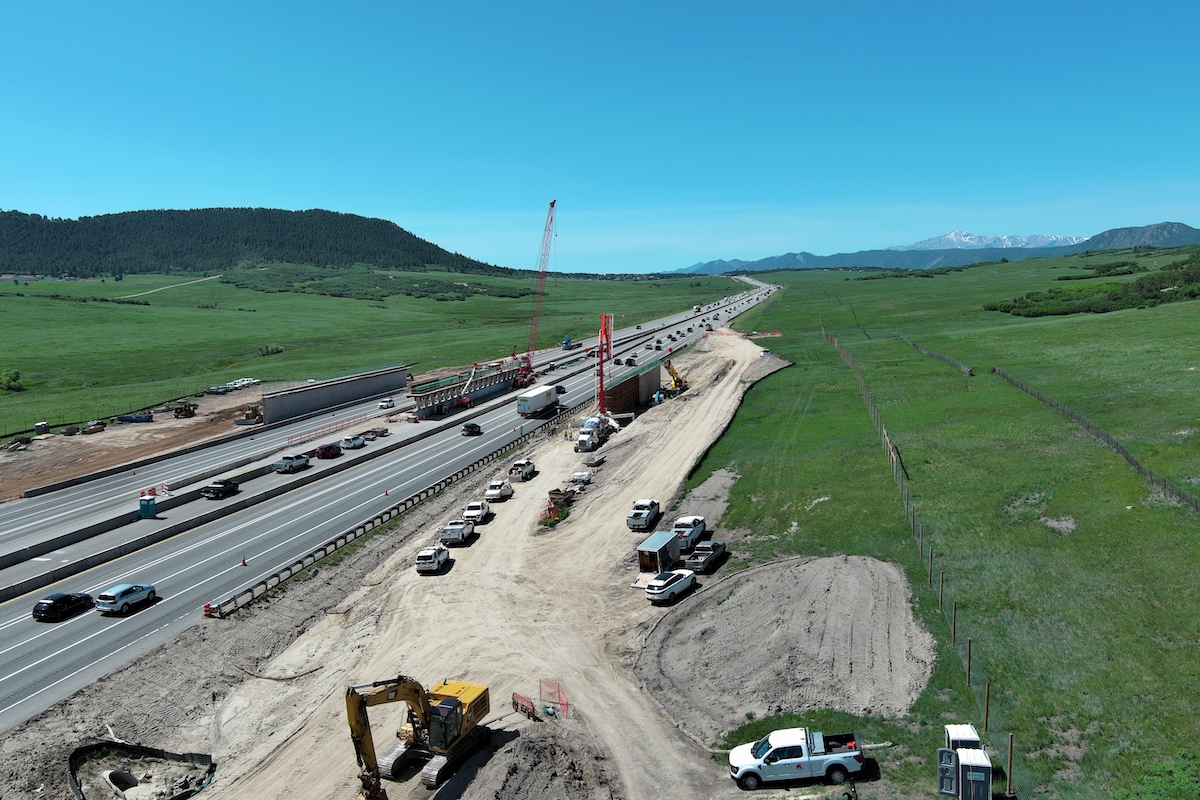In southwest Austin, Texas, the Oak Hill Parkway Project has passed the halfway mark in its construction and is on track for substantial completion in 2026. The massive Texas Department of Transportation (TxDOT) project, which was in planning and development for over three decades, is transforming the intersection of U.S. 290 and SH 71 from a four-lane divided roadway into a six-lane controlled access highway.
Drivers along the existing route have experienced increasing traffic volume and frequent gridlock around the intersection in the urban community of Oak Hill, where it serves as a key route for mostly commuter traffic between central Austin and fast-growing suburban and rural communities. Average daily traffic along the corridor is projected to be over 152,000 vehicles by 2040, and the intersection has long been identified as a seriously congested area in need of updated traffic solutions.
The complex project includes many substantial components, such as:
- 6 miles of new roadway along U.S. 290
- Two to three nonstop mainlanes in each direction on U.S. 290
- Two to three frontage road lanes in each direction on U.S. 290
- A U.S. 290/SH 71 overpass at William Cannon Drive
- Lowered mainlanes of U.S. 290 farther west, allowing cross streets to remain at ground level servicing local traffic, while through traffic between Austin and Dripping Springs flows continuously underneath
- More than a mile of new roadway along SH 71
- Full reconstruction of the “Y” interchange itself with new direct connect flyovers between U.S. 290 and SH 71, which will remove the signalized intersection for through traffic traveling between the two highways
- New intersections along U.S. 290 at Convict Hill Road, RM 1826, Scenic Brook Drive, and Circle Drive/South View Road
- New pedestrian and bicycle infrastructure, including 14 miles of shared-use paths/sidewalks
- New landscaping, tree plantings, and other aesthetic additions
- A stormwater detention pond to mitigate flood risk
The $677 million design-build undertaking is fully funded as a Texas Clear Lanes project. TxDOT's Texas Clear Lanes Initiative addresses gridlock throughout the state, using data to identify and prioritize congested roadways.

| Your local Takeuchi Mfg Ltd dealer |
|---|
| Kirby-Smith Machinery |
| Nueces Power Equipment |
Colorado River Constructors (CRC), a joint venture of Fluor and Balfour Beatty, is the Oak Hill Parkway Project's contractor. AECOM is the lead designer.
Major construction on U.S. 290 at the far west and far east segments of the project began in late 2021. Major activity at the U.S. 290/SH 71 “Y” interchange segment began in early 2022.
During the 2024 construction season, CRC completed two of the four planned cross-street bridges. The first to open to traffic was the Circle Drive/South View Road cross-street bridge, completed in August. CRC also installed a sidewalk and shared-use path on either side of the Circle Drive/South View Road bridge.
The second cross-street bridge, located at Scenic Brook Drive, opened to traffic in mid-October, three weeks ahead of schedule. The construction of this bridge enabled CRC to shift traffic to the frontage roads through a large portion of the corridor, freeing up space for excavation of the future mainlanes in the area.

| Your local Gomaco dealer |
|---|
| Closner Equipment Co Inc |
| Romco Equipment Co |
Additionally, the future westbound U.S. 290 mainlane and frontage road bridges were completed between Joe Tanner Lane and the “Y” interchange.
Currently underway is the construction of the future RM 1826 cross-street bridge and the lowered mainlanes underneath. As the third of four planned cross-street bridges, it requires mass excavation of the existing roadway and surrounding rock and dirt. CRC is also continuing construction of the U.S. 290 mainlanes and eastbound U.S. 290 frontage road at the “Y” interchange. This work includes mass excavation, soil nail and MSE wall construction, and underground utility installations.
CRC also began construction of the eastbound SH 71 lanes and associated bridges this year. Crews are currently building walls to support the frontage roads and mainlanes, performing underground utility installations, and constructing several bridges. Additionally, land grading and drainage installations have begun for the dam, which is part of the water detention pond system.
The next major project phase will include the final cross-street bridge, located at Convict Hill Road. Crews will also construct the lowered mainlanes underneath the future bridge while traffic is shifted to the frontage roads.

| Your local Sennebogen LLC dealer |
|---|
| ASCO Equipment |
| WPI |
Roadway crews will finish the eastbound frontage road between RM 1826 and William Cannon Drive and open it to traffic in mid-2025. Construction of the remaining eastbound U.S. 290 mainlane bridges between the “Y” interchange and Joe Tanner Lane will be completed. Traffic will be shifted to open space for crews to continue construction closer to the “Y”.
CRC will place concrete paving for the new U.S. 290 mainlanes between Circle Drive and Convict Hill Road. Before this happens, crews will complete excavation to lower the grade of the mainlanes, place flexbase and cement-treated base, construct soil nail walls, and finish drainage system installation.
“The public has been an integral part of this journey from the very beginning, going back 30-plus years,” she said. “TxDOT has made changes to address public feedback where feasible.”
Some of these design adjustments and project improvements include:

| Your local LeeBoy dealer |
|---|
| Closner Equipment Co Inc |
| Romco Equipment Co |
| ASCO Equipment |
| Bee Equipment Sales Ltd |
- Building a design that separates through traffic from local traffic
- Limiting proposed elevation at the U.S. 290/SH 71 intersection to one level instead of two levels above existing ground
- Building accommodations for bicyclists and pedestrians, including sidewalks and a shared-use path along the corridor
- Extending the improvements west of Circle Drive and reducing the proposed project's footprint in that area
- Minimizing impacts to Williamson Creek, including adding natural treatments at Williamson Creek instead of a concrete culvert to channelize the waters, and removing a significant amount of existing concrete out of the creek by building new bridges
- Replacing project lighting west of William Cannon Drive with Dark Sky-friendly fixtures (designed to direct light to the ground, not up into the sky where it can contribute to light pollution)
- Creating an emergency access route along westbound U.S. 290 frontage road near Thunderbird Road by request of local emergency responders
- 2 million cubic yards of rock will be excavated for this project, with approximately 1.5 million complete
- More than 300,000 square feet of soil nail wall will be constructed to support the lowered U.S. 290 mainlanes, with 171,000 square feet complete
- Over 1 million square feet of bridge deck will be constructed, of which nearly 50 percent is complete
- More than 300,000 square yards of concrete paving will be placed for the U.S. 290 mainlanes, with 73,000 square yards complete on the far east and west ends of the project
- Over 60,000 linear feet of water lines have been installed
- 90,000 linear feet of drainage infrastructure will be installed during the project, with 72,000 linear feet complete
- Owner: Texas Department of Transportation
- Contractor: Colorado River Constructors, a joint venture of Fluor and Balfour Beatty
- Lead Designer: AECOM
- Other Key Partners: Raba Kistner (quality assurance and environmental); H.L. Chapman (rock mining); Mica Corporation (electrical); Austin Formula (drainage); AH Beck (drilled shaft foundations); Lonestar Paving (asphalt paving); Panther Creek Trucking (haul trucking) Photos courtesy of Colorado River Constructors
“Not only are there unique stipulations in the design-build contract, but also complex access challenges which the construction teams work through every day, due to the location of the creek inside the project area,” he said. “CRC has environmental teams monitoring best management practices daily to limit project runoff from reaching the creek. These include gabion baskets, filter guards, rock filter dams, and silt fence.”
Even along one of the most congested corridors in the state of Texas, throughout the Oak Hill project CRC has maintained two lanes of traffic in each direction along both highways (which was the existing condition prior to the project). This was accomplished through an “outside-in” approach.
“CRC first built the U.S. 290 frontage roads 'outside' of the existing U.S. 290 roadway footprint,” said Karl Niedzwecki, CRC Deputy Project Director. “Once those frontage roads were completed, U.S. 290 traffic was shifted onto them to open space on the 'inside' to build the new lowered U.S. 290 mainlanes in the middle. The latest example of this approach was the construction of the Scenic Brook Drive cross-street bridge. Traffic was pushed to the new U.S. 290 frontage roads on the outside of the right of way footprint, leaving space in the middle for crews to construct the new cross-street bridge and walls to support the new lowered U.S. 290 mainlanes underneath. This method is also currently being used to construct the RM 1826 cross-street bridge.”

| Your local Wirtgen America dealer |
|---|
| Kirby-Smith Machinery |
| Nueces Power Equipment |
Also critical to project progress are complex maintenance-of-traffic plans that include 89 traffic switches, of which 63 have been performed to date, according to David Richmond, CRC Deputy Construction Manager.
“Our maintenance-of-traffic plans have been a vital part of the success of the project thus far,” he said. “Planning switches around construction milestones has given us the ability to keep traffic flowing through a heavily used corridor, which the public appreciates.”
Statistics provided by CRC give a good idea of the size and scope of the Oak Hill Parkway Project:

| Your local ASV dealer |
|---|
| CLM Equipment Co |
“CRC is using H. L. Chapman to perform rock mining activities during construction of the lowered U.S. 290 mainlanes, which requires excavating large amounts of limestone,” said Dave Trent, CRC Construction Manager. “Of the 2 million cubic yards of rock to be excavated for the project, approximately 75 percent has been completed to date. This rock is being reused where possible throughout the project, which increases sustainability while diverting materials from local landfills.
“CRC has also been recycling existing roadway materials from demolished portions of U.S. 290 and SH 71 to create cement-treated base for the new U.S. 290 mainlanes. This roadway recycling effort helps CRC conserve new resources while also reducing haul truck traffic inside the project area.”
“TxDOT is committed to the healthy preservation of many trees along the project corridor and put unique stipulations in the design-build contract as a result,” Astarita added. “Several iconic oak trees along U.S. 290 near Williamson Creek are being preserved. In addition, CRC recognized more than 200 other trees that could be saved along the alignment due to design optimizations.”
TxDOT included a unique specification in the design-build contract for CRC to have an arborist on its team to care for these protected trees. At the end of the project, hundreds of new native trees and bushes will be planted along the new roadway.

| Your local Wirtgen America dealer |
|---|
| Kirby-Smith Machinery |
| Nueces Power Equipment |
















